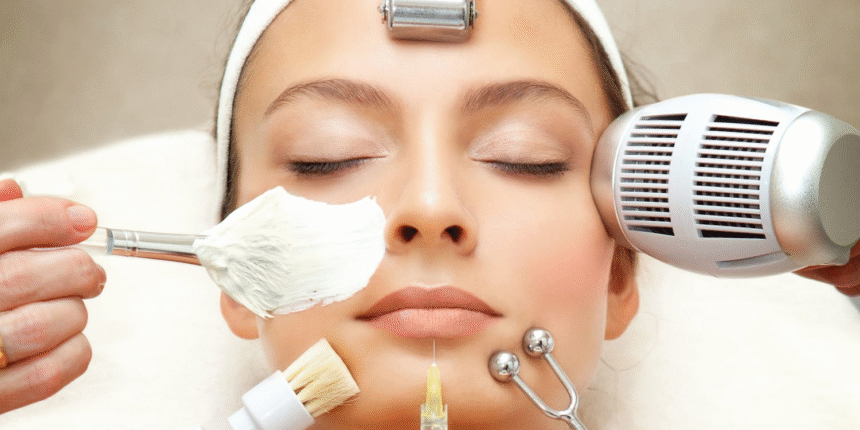Creating an effective skincare routine doesn’t have to be overwhelming. Dermatologists recommend a routine that is simple, consistent, and based on your specific skin type and concerns. Whether your goal is to manage acne, slow aging, reduce dryness, or protect your skin from sun damage, the right routine can make a big difference. By choosing the right products and steps, you can achieve clear, healthy skin while preventing common skin problems.
Know Your Skin Type
Understanding your skin type is the first step in building the right routine:
- Oily: Shiny, prone to acne and enlarged pores
- Dry: Tight, flaky, or rough
- Combination: Oily in the T-zone and dry on cheeks
- Sensitive: Easily irritated or red
- Normal: Balanced, not too oily or dry
Choose products formulated specifically for your skin type to avoid irritation and imbalance.
Start with a Gentle Cleanser
Cleansing removes dirt, oil, and makeup. Use a gentle, non-comedogenic cleanser twice daily:
- Foam or gel cleansers for oily or acne-prone skin
- Cream cleansers for dry or sensitive skin
- Micellar water for very sensitive or minimal makeup days
Avoid harsh soaps that strip your skin’s natural moisture.
Use a Toner (Optional)
Toners can help balance the skin’s pH and refine pores, but they’re not always necessary. If used, choose alcohol-free formulas with calming or hydrating ingredients like rose water, witch hazel, or hyaluronic acid.
Apply Treatment Products
This step targets specific concerns like acne, dark spots, or fine lines. Apply after cleansing and before moisturizing:
- Retinoids (for acne and anti-aging)
- Vitamin C serum (for brightening and protection)
- Niacinamide (for redness, pores, and oil control)
- Salicylic acid or benzoyl peroxide (for acne-prone skin)
Start slowly to avoid irritation, especially with active ingredients.
Moisturize Daily
Moisturizers help maintain your skin barrier and prevent dryness:
- Gel or water-based moisturizers for oily skin
- Creamy moisturizers for dry skin
- Fragrance-free, hypoallergenic products for sensitive skin
Apply morning and night, even if your skin is oily.
Don’t Skip Sunscreen
Sunscreen is the most crucial step in any dermatologist-recommended routine. Use a broad-spectrum SPF 30 or higher every morning, even on cloudy days. Sunscreen protects against premature aging, sunburn, and skin cancer.
- Mineral sunscreens for sensitive or acne-prone skin
- Lightweight, matte finish SPF for oily skin
- Moisturizer + SPF combos for simplicity
Reapply every 2 hours if exposed to the sun.
Exfoliate Weekly (But Not Daily)
Exfoliation removes dead skin and improves texture. Use 1–2 times a week:
- AHAs (like glycolic acid) for dull or dry skin
- BHAs (like salicylic acid) for oily or acne-prone skin
- Avoid harsh scrubs that can damage skin barrier
Be cautious if using other active treatments in your routine.
Stay Consistent
Skincare results take time. Stick to your routine for at least 4–6 weeks before expecting visible results. Sudden changes or overuse of products can cause irritation or breakouts.
When to See a Dermatologist
If you have chronic acne, eczema, psoriasis, or skin reactions, consult a board-certified dermatologist. They can recommend prescription treatments or suggest professional procedures for deeper results.
Conclusion
Developing a dermatologist-recommended skincare routine involves understanding your skin, using gentle yet effective products, and staying consistent. Start with the basics—cleanser, moisturizer, and sunscreen—and slowly add treatments as needed. With patience and the right approach, you can improve your skin’s health, texture, and glow while preventing future concerns.Tools
















